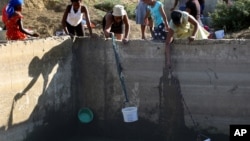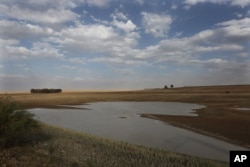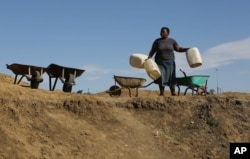South Africa is quickly running out of maize as the El Nino drought deepens. Like many other countries in southern Africa, South Africa is experiencing its worst drought in decades. As the current crop withers due to extreme heat and little rainfall, food prices are rising and may be out of reach for millions.
A devastating drought caused by adverse effects of El Nino has left South Africa exposed to a serious food security threat. El Nino is a global climate phenomenon characterized by the warming of ocean surface temperatures in equatorial parts of the Pacific and recurs every few years.
The country’s water reservoirs are running low and it is left with a four-month stock of its staple food, maize.
Resources short, funding challenges
South Africa’s minister of Agriculture, Forestry and Fisheries, Senzeni Zokwana, said the situation is critical and requires urgent importation of maize. "By the end of May we may be short of white and yellow maize. We have to make sure therefore that by that time we have enough maize in stock," he said.
Experts warn that over a billion dollars will be required to avert catastrophic hunger for both humans and animals.
The World Food Program said Monday that an estimated 14 million people are facing hunger in southern Africa, while programs intended to assist people face critical funding challenges.
Botswana said it is experiencing its worst drought in five years, with both water and food stocks quickly running out.
Bleak future
One Botswana rural farmer, Mothoemang Maase said the future is gloom and doom. "Life is very difficult. Not being able to plow, no food for our cattle, no grass,” he explained, “so we are really having a problem."
Zimbabwe has not been spared either. Most crops have wilted because of heat and long dry spells. Thousands of livestock have also succumbed to the drought. With the government already failing to pay civil servants due to lack of funds, many fear it is a matter of time before they, too, face the same fate as their livestock.











